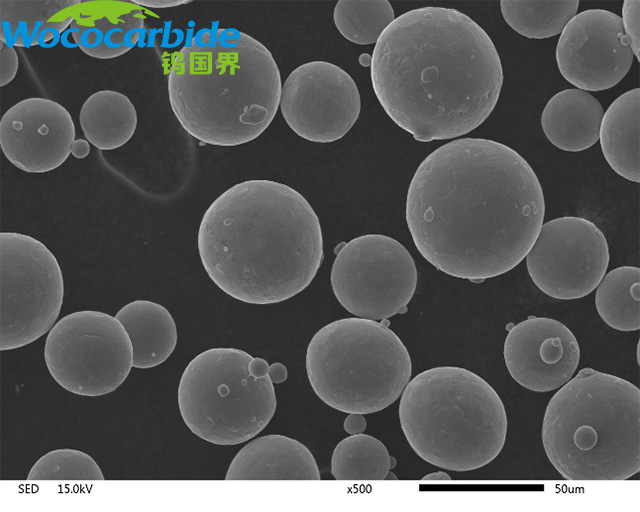

At present, there are three main types of compound carbides for domestic production of titanium-containing cemented carbides: CK24, CK32, and CK40. Among them, the amount of CK32 is the largest. But from the aspects of alloy structure, solubility and solid solubility of compound carbides, and thermodynamics of material diffusion, CK40 should be the best. It is also possible to use CK24 when making gravity cutting inserts.

First, let's analyze the compound carbides of CK24. The main features of the solid solution are: at the alloy sintering temperature, the solubility of WC in TiC is saturated, so the alloy structure is relatively stable and the process is easy to control. However, for the production of different grades of alloys, a variation of approximately 70/30 should be used, rather than the traditional WC/TiC=71/29 (reviewed in this book).
About CK40 Duplex Carbide. We know that the compound carbide is a serious unsaturated solid solution, and TiC can still dissolve a large amount of WC to form a "ring structure" during the alloy sintering process. The formation of the "ring structure" is mainly due to the fact that the solid solution is seriously unsaturated, and the additional WC will continue to dissolve into the solid solution during the sintering process of the alloy. Due to the alloy sintering temperature and time can not meet the complete dissolution of WC in solid solution. Therefore, from the inside to the outside, TiC gradually decreases, and WC gradually increases, so that the outermost layer is complete WC (theoretically). Therefore, the alloy metallography forms different levels of color changes, which look like a "ring".
So is the appearance of the "ring" good or bad for the alloy? We believe that good control can be very beneficial, and bad control can be bad. First of all, it is certain that the appearance of the "ring" can enhance the wear resistance of the alloy, but at the same time increase the brittleness of the alloy. But as long as it is well controlled, it is still short-range disorder and long-range order. However, since the outer layer of the "ring" is WC, this enhances the wettability of cobalt to the hard phase. Therefore, the brittleness of the alloy due to the "ring" is buffered and offset.
In this case, why is CK32 not the preferred solid solution? This mainly depends on the structure of the alloy gold image produced, other physical detection indicators and the actual use effect, and there is not much theoretical demonstration at present.
If more Ta, Nb and other components need to be added in the alloy, the choice of compound carbide is definitely CK40. This is because the wettability of cobalt to Ta and Nb is very poor, that is to say, Ta and Nb can only be wetted after solid solution with W and Ti. Therefore, only the solid solution of CK40 can dissolve Ta to the greatest extent during the alloy sintering process. , Nb. And using CK24 is the worst.
Hot information

